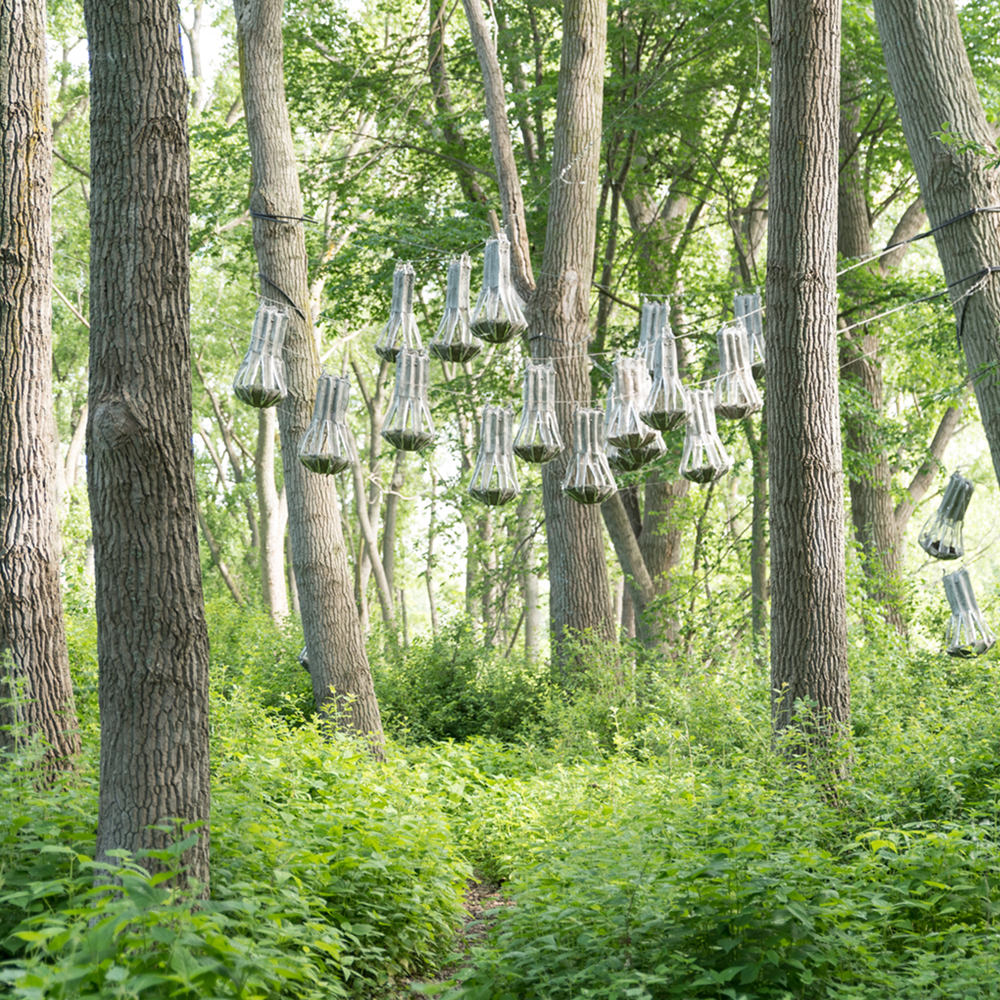EDUCATION CENTER HOURS:
Research at Tifft Nature Preserve
The Buffalo Society of Natural Sciences (BSNS) has a long history, dating back to 1861, of conducting research in the natural sciences. Early work of the BSNS centered on the disciplines of zoology, ornithology, botany, geology, and others, with collections housed at the museum. In 1982, the BSNS took charge of the city-owned property, then known as Tifft Farm Nature Preserve. The Preserve is now viewed as the Society’s “living collection” that includes the site’s vegetation, wildlife, hydrology, soils, natural processes, and history. The Preserve provides an excellent laboratory to conduct research in ecology and environmental science and to continue the BSNS’s tradition as a leading figure in scientific research in Buffalo and western New York. Since 2009, research conducted by students and faculty from local colleges and universities has grown substantially. These institutions include Buffalo State College, Canisius College, SUNY Buffalo, SUNY Fredonia, SUNY Geneseo, Erie County Community College, and others. Partnerships with researchers from these institutions have enriched our understanding of Tifft Nature Preserve, in addition to further cementing Tifft Nature Preserve as a community asset: an excellent and accessible field site for biological research.
The 264 acre site was formerly a transshipment center and dump, but also has the distinction of being one of the largest urban nature preserves in the country. The past land uses and present context of Tifft Nature Preserve provide a unique opportunity for ecological research in areas such as brownfield reclamation, environmental toxicology, and urban wildlife management. This history and isolation from other natural habitats also presents many challenges for current management and preservation of the site’s natural resources. Therefore, research that will assist in addressing these challenges is encouraged. Broad research topics could include invasive species, ecological restoration, wetland habitat management, and nuisance wildlife management. However, this is not intended to be limiting, and a broad array of research proposals will be considered. With the Preserve’s 75 acre cattail marsh, a rich diversity of wildlife (over 260 bird species have been observed), and its prime location on Lake Erie’s waterfront, the opportunities of scientific inquiry are endless.
Interested in conducting research at Tifft? View our research guidelines and proposal requirements here.
Current Research at Tifft Nature Preserve
Dr. Randal Snyder, Buffalo State College
Examining effects of diet and environmental factors on growth, survival, and reproduction of the brook stickleback (Culaea inconstans) to understand how future environmental change might affect their populations.
Amanda Jacobs, Master’s student, Buffalo State College
Advisor: Dr. Robert Warren
Examining the multi-trophic effects of the removal of European buckthorn (Rhamnus cathartica) on a woodland food web. While many studies have been conducted that examine the consequences of Buckthorn invasion on individual trophic levels, few have examined the effects of R. cathartica on multiple trophic levels and how its invasion can reshape entire systems.
Maris Grundy, PhD candidate, University at Buffalo
Advisor: Dr. Cari Ficken
What are the effects of glyphosate and replanting treatments on taxonomic and functional plant diversity in a disturbed wetland?
-
- How do (a) taxonomic and (b) functional composition*, richness, and diversity differ across marsh habitat treated using varied Phragmites australis management approaches?
- How does Phragmites australis reinvasion differ in marsh habitat following varied management treatments?
- How do environmental variables influence taxonomic and functional composition, richness, and diversity across marsh habitat post restoration treatment?
Alyssa Fisher, Master’s student, SUNY Fredonia
Advisor: Dr. Karry Kazial
Determining the effect artificial light switching has on bats in their natural environment. The concept of light switching is relevant and can be applied to the natural environment of bats. There are instances of light switching at a stationary location, or while bats move through their environment, that make this study applicable to the natural environment bats might encounter. The habitat bats forage in now commonly occupies light that acts as a switch such as solar activated lights, lights set on a timer, and motion sensor lights. Since bats encounter types of lighting that act as a switch it is important to find out the effect artificial light switching has on bats in their natural environment to help determine the best course of action to help bats thrive in their natural environment. To our knowledge, investigation of light switching and bat activity is novel and not found in the literature.
Dr. Robin Foster, Canisius College
Dr. Foster is conducting a number of monitoring efforts and population surveys, including a study on human-deer interaction and surveys for a number of herp species.


